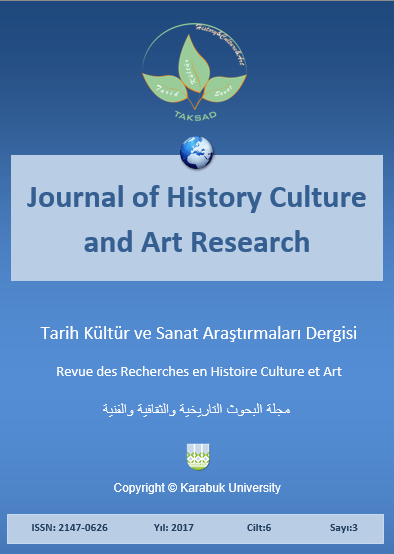The Historical Semiotics of Hafez’s Poems
DOI:
https://doi.org/10.7596/taksad.v6i3.998Keywords:
Historical semiotics, Cultural semiotics, Cultural signs, Hafez’s poems, Tartu School.Abstract
Semiotics is defined as the study of signs. It is a general field one branch of which is language. There are literary signs in literature, as part of language, that are encoded to provoke meaning. The signs or forms in Hafez’s poems will be assessed here to discover what meaning he has meant to convey. Failure in relating the right meanings to the signs deprive us from the right interpretation of the poems. Semiotic achievements can help us to study meaning related to the form. Saussure’s structural view and his overlooking context and cultural background and his proposed indissoluble link between form and meaning cannot in all cases provide us with the precise meanings of literary signs. Poststructuralists, on the other hand, postulate an unstable relationship between sign and meaning. According to them, under different circumstances different meanings can be attributed to signs. In the present research, the posed question was if taking cultural and historical background into account could shed light on providing us with the very meaning meant by the poet. Based on content analysis, the history of Hafez’s age as one aspects of culture as well as the achievements of modern semiotics were studied and then numerous signs Hafez has encoded in his poems were randomly assessed. The theoretical basis of the research is Juri Lotman’s cultural semiotics. His “semiosphere” refers to the whole semiotic signs within a culture. The Tartu School has had a tendency to cultural history and cultural anthropology. It was clarified that historical awareness of the age in which the poet has versified his poems can lead us to the precise meaning the poet has meant to convey.
References
Arberry, Arthur J. (1974). Fifty Poems of Hafiz. Cambridge University Press.
Aryanpur (Kashani), Abbas (1344). Poetical Horoscope (Odes of Hafiz). Tehran: Golshan Printing House.
Azimifard, Fateme (1392). Descriptive Dictionary of Semiotics. Tehran: Elm Publications.
Bayani, Shirin (1386). Mongols and Ilkhanate Ruling in Persia. Tehran: Samt Publications.
Bina, Mohsen (1369). The Flower Collection. Tehran: Bina Publications.
Chandler, Daniel (1387). The Basics Semiotics. (Translated into Persian by Mehdi Parsa), Tehran: Sureye-Mehr Publications.
Clarke, Henry Wilberforce (1377). Divan of Hafez (Persian-English). Tehran: Bute Publications.
Clarke, Henry Wilberforce (2001). Ghazal of Hafez Shirazi, (Compiled and Corrected by Dr. Behrouz Homayoun Far). Part 1 and part 2, Http://www.enel.ucalgary.ca/People/far
Cooley, Mason (1376). Roland Barthes. (Translated by Khashayar Dayhimi), Tehran: Kahkeshan Publications.
Farshidvard, Khosro (1375). Hafez Roles. Tehran: Safialishah Publications.
Hudson, Grover (2000). Essential Introductory Linguistics. Blackwell Publishers Inc.
Hutcheon, Linda (1998). A Poetics of Postmodernism. New York: Routledge.
Matthews, P. H. (2007). Oxford Concise Dictionary of Linguistics. Oxford University Press.
Mazzaoui, Michel M. (1363). The Origions of the Safawids. (Translated by Yagub Ajand), Tehran: Gostare Publications.
Mirjafari, Hossein (1385). The History of the Political, Social, Economic and Cultural Changes in Iran During the Timurid and Turkman Periods. Isfahan: Samt Publications.
Moin, Mohammad (1387). Persian Dictionary. Tehran: Sorayesh Publications.
Nersisians, Emilia (1387). Human, sign, Culture. Tehran: Afkar Publications.
Safavi, Koorosh (1384). Descriptive Dictionary of Semantics. Tehran: Farhang Moaser.
Sajjadi, S. Ziaoddin (1387). The Foundations of Mysticism and Suffism. Tehran: Samt Publications.
Shahbazi, Ramtin (1393). Cultural Semiotics of Iranian Literary History and Plays. Tehran: Elm Publications.
Sojudi, Farzan (1390). Cultural Semiotics. Tehran: Elm Publications.
Yamini, Parastoo (1395). The House of My Beloved. Tehran: Golpar Publications.
Downloads
How to Cite
Issue
Section
License
All papers licensed under Creative Commons 4.0 CC-BY.- Share — copy and redistribute the material in any medium or format
- Adapt — remix, transform, and build upon the material for any purpose, even commercially.
Under the following terms:
Attribution — You must give appropriate credit, provide a link to the license, and indicate if changes were made. You may do so in any reasonable manner, but not in any way that suggests the licensor endorses you or your use.
- No additional restrictions — You may not apply legal terms or technological measures that legally restrict others from doing anything the license permits.







